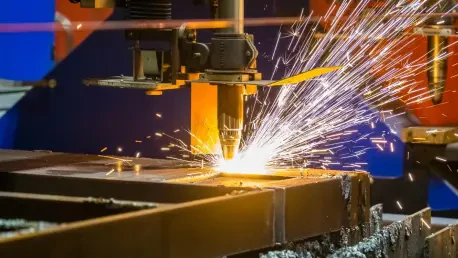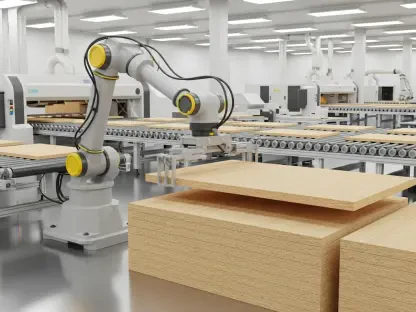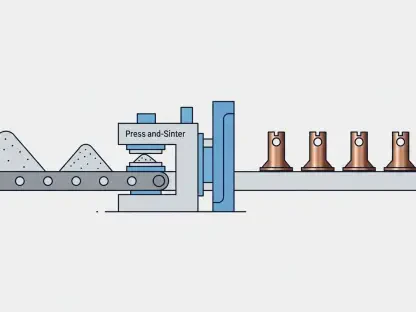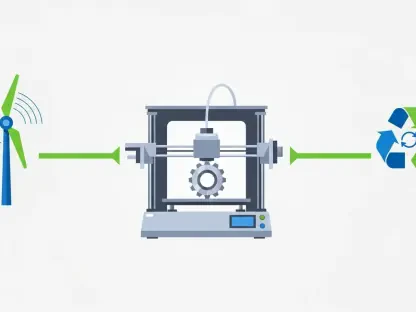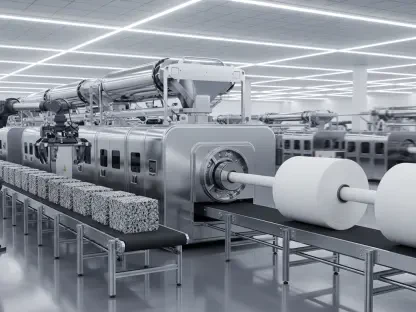The U.S. metalworking machinery industry is currently experiencing a spike in demand, reflected in March’s exceptional $515.8 million in new orders. This figure marks the highest monthly value since March 2023, pointing to continued industry growth. However, amidst this surge, machinist strikes and economic uncertainties pose considerable challenges. This analysis seeks to examine potential impacts on the metalworking machinery sector, focusing on market performance, future predictions, and strategic insights.
Sustained Growth Amid Economic Uncertainty
Amidst a robust start, the sector witnessed an impressive 12.4% year-over-year growth in Q1, with $1.26 billion in total orders. March alone saw a 33.8% increase from February and a 20.5% rise compared to the previous year. Despite machinery orders experiencing a slight quarter-on-quarter decline of 5.7%, the overall momentum from the 2024 IMTS continues to propel the industry forward. Aerospace manufacturing remains a pivotal driver, contributing significantly to the current surge. However, industry stakeholders remain laser-focused on labor disputes and macroeconomic challenges that might pose risks to this impressive trajectory.
Historical Context and Industry Resilience
The post-IMTS era signified a pivotal moment for the metalworking machinery sector, setting the foundation for significant expansion. As the market adapted to new demands and innovations, it managed to weather downturns and continue its upward trend. Historical patterns reveal that despite disruptions, the industry has often rebounded stronger, leveraging its adaptability and innovation-driven culture. Learning from past transitions allows for informed decision-making amidst current challenges.
Examining Current Trends and Predictions
Drivers of Growth and Potential Disruptions
Aerospace manufacturers’ remarkable orders in March demonstrate the industry’s robust growth drivers. However, ongoing machinist strikes threaten this narrative by potentially delaying production and fulfillment. Oxford Economics projects that recovery may be postponed to late 2026, with strikes compounding existing economic concerns like rising costs and supply chain issues. Adapting through strategic planning and diversification could be key to overcoming these challenges, ensuring continued industry vitality.
Regional Differences and Sector-Specific Insights
The demand for machinery isn’t consistent across every market segment or geographic region. Aerospace remains a high-growth sector, while others may trail. Regional economic policies, technological advancements, and innovation rates play a significant role in shaping these divergences. Innovations like AI and automation offer competitive edges yet present challenges requiring tailored regional strategies. Understanding and responding to these localized differences will be crucial in maintaining broader industry growth.
Strategic Recommendations for Overcoming Challenges
Looking ahead, embracing technological advancement and navigating regulatory changes are critical strategies for stakeholders. Automation and digital transformation are likely to improve efficiencies but could necessitate shifts in employment strategies. Economic policies, particularly regarding trade and environmental regulations, are set to further influence industry trajectories. Experts anticipate a moderated growth pace, underscoring the need for sustainable practices. Engaging with labor forces and investing in research and development are pivotal to minimizing disruptions and maximizing opportunities.
By remaining informed and agile, businesses and consumers can effectively leverage these insights. Adaptive management, combined with strategic foresight, emerges as a key approach for successfully navigating potential challenges and ensuring continued success in the metalworking machinery sector.
Reflections and Takeaways
The metalworking machinery sector plays a crucial role in the manufacturing landscape. Despite credible threats from strikes and economic uncertainties, the industry’s adaptability suggests its potential for continued relevance. By navigating today’s challenges with resilience and innovation, stakeholders lay the groundwork for sustained progress, ensuring the industry remains vibrant and prosperous.
